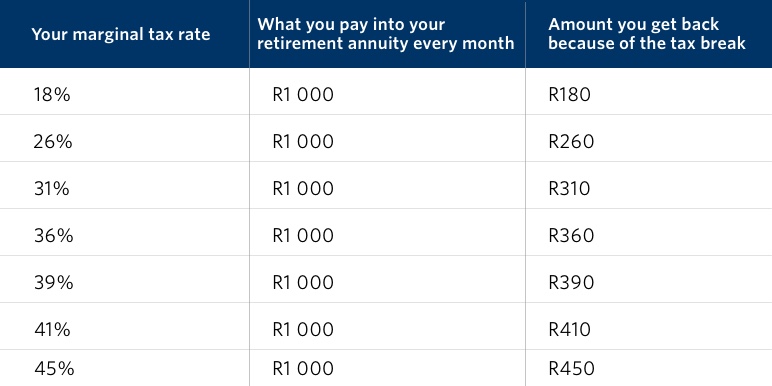Many of us have just climbed the yearly administrative Everest of submitting our tax returns. We weathered the storm of piles of white till slips in the hope of possible deductions to help us pay less tax.
This while there is another magnificent way of reducing your liabilities. Ironically, in this case you don’t have to spend more to receive greater tax deductions – you just save more.
As an actuary I wish I could shout from the rooftops that saving is so much easier than people think. You must just decide consciously to start saving. And by far the most tax-efficient savings vehicle is saving for retirement.
“Tax-efficient” is a word that needs explanation. Efficient usually means you get more done with less – or at least that you don’t waste. In the case of retirement savings, it means it’s a way towards paying less tax. You’re also not “wasting” money on tax when your money grows. To the contrary.
This is the case because government is so keen for us to save for retirement that they go to great lengths to “sponsor” our savings, so to speak. When you invest in your retirement, they give you a large chunk of it back when you submit your tax return. This is to encourage you to save as much as possible for retirement.
I think of my retirement money as the salary I’ll pay myself when I will no longer work for a company. At the moment, I can try to convince my manager that I’m worth more than what my paycheck reflects. By the time I retire, the only person I will be able to confront about how abundant or not my income is, will be me. My past me.
We benefit in two ways from investing in our retirement:
- We don’t pay tax on the growth of our retirement investments (unlike almost all other investments).
- For every penny we put in, we get a tax refund that aligns 100% with the tax rate we usually pay.
If you don’t believe me how much you can score by investing extra in your retirement savings, look at the numbers. If you are part of a work scheme, you can invest more. Or take out another retirement annuity (RA) for extra flexibility. At retirement it’s sometimes great to take the income from one RA, and keep another invested for more growth before you need the income.
If someone earns R50 000 per month, their marginal tax rate is 25%. For every R1 000 they invest in an RA, government will give back R250. This means it “cost” them only R750 to invest R1 000 every month for their retirement.
Every person who pays tax, can score in this way:
If you reinvest the refund instead of spending it, your refund the following year will be still bigger.
That is why it makes so much sense to put any spare penny into retirement funds. Yes, there is a limit to how much you can invest in this way. But the limit kicks in only when you are earning more than R1,1 million a year. And if you contribute more than the limit, it carries over to the next year, which will be beneficial by the time you retire. You just can’t lose.

ABOUT THE AUTHOR
Pieter Albertyn
Head of Product Solutions at Momentum Savings
Pieter is on a personal mission to empower more South Africans to be better prepared for what life throws at them.
He is a qualified actuary with over 20 years of experience spanning across pensions, risk and savings industries, in roles ranging from IT to actuarial valuations, product management and product development. He joined Momentum in 2016 and serves as the Head of Product Solutions for Momentum Investo.
Pieter completed a leadership programme with Duke University in 2021 and has a keen interest in delivering value through innovation.